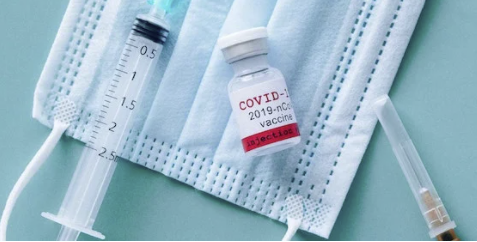The good news is that we may avoid it here in Houston.
A collision of three respiratory viruses — COVID-19, influenza and RSV — may not hit Houston as severely as other parts of the country, experts say, but pediatric hospitals are still preparing for a busy winter season with at least some virus overlap.
Texas Medical Center data published Tuesday shows early signs of another COVID wave, with an uptick in hospitalizations and the positivity rate, which jumped from 3.2 percent to 5 percent last week. COVID wastewater surveillance also offers a grim outlook, as the viral load rose for the fifth straight week, to 196 percent of the baseline set in July 2020. Newer variants make it difficult to predict the size and severity of the next wave of infections, experts say.
Meanwhile, RSV and flu, two respiratory viruses that commonly infect children, continue to circulate at high levels, weeks after patients began filling beds and prolonging wait times in Houston pediatric hospitals. Despite the ongoing strain, infectious disease experts believe Houston can avoid a so-called “tripledemic,” in which three simultaneous virus surges overwhelm hospital systems.
Statewide surveillance shows both RSV and flu have either peaked or declined.
“At least for us, here in Houston, the story that’s being written is we had this very early peak of flu and RSV and they’re starting to come down,” said Dr. Wesley Long, the medical director of diagnostic microbiology at Houston Methodist. “But then we’re probably going to see a winter speed bump of COVID.”
Dr. Melanie Kitagawa, medical director of the Texas Children’s Hospital pediatric ICU, said there are roughly 50 children admitted to Texas Children’s with RSV, or respiratory syncytial virus, which usually causes mild cold-like symptoms but can be severe for infants and older adults. That number has remained steady for at least a month, but flu admissions have been decreasing across the hospital system, she said.
Flu and RSV admissions have stayed at consistently high levels at Children’s Memorial Hermann for weeks, said Dr. Michael Chang, an infectious disease pediatrician at the hospital who is affiliated with UTHealth Houston.
Chang expects RSV to become more manageable before COVID ramps up. The percentage of positive RSV tests has dropped across the state since early October, from roughly 25 percent to less than 15 percent, according to the Texas Department of State Health Services.
For him, flu rates are more of a concern. Texas’ flu infection rate of 29 percent is among the highest in the nation, according to the Centers for Disease Control and Prevention.
“For flu, what I really worry about is that people have returned to normal behaviors, and vaccine uptake doesn’t seem to be really good,” he said. “From what I’ve seen of the new COVID numbers, we may see an unfortunate confluence of (COVID) and significant flu cases. But luckily I think we will avoid a full ‘tripledemic.’”
There are recent signs that the flu is waning as well.
See here for some background. We have milder winters here, so because we can still do stuff outside we can have a smaller winter effect from COVID. But the bottom line is the same as it always has been for minimizing the spread of these viruses. Get your COVID boosters, especially the bivalent booster. Get your flu shot. Keep wearing your facemask in crowded indoor spaces, and avoid such spaces where possible. You have the power and the choice to minimize your risk.

